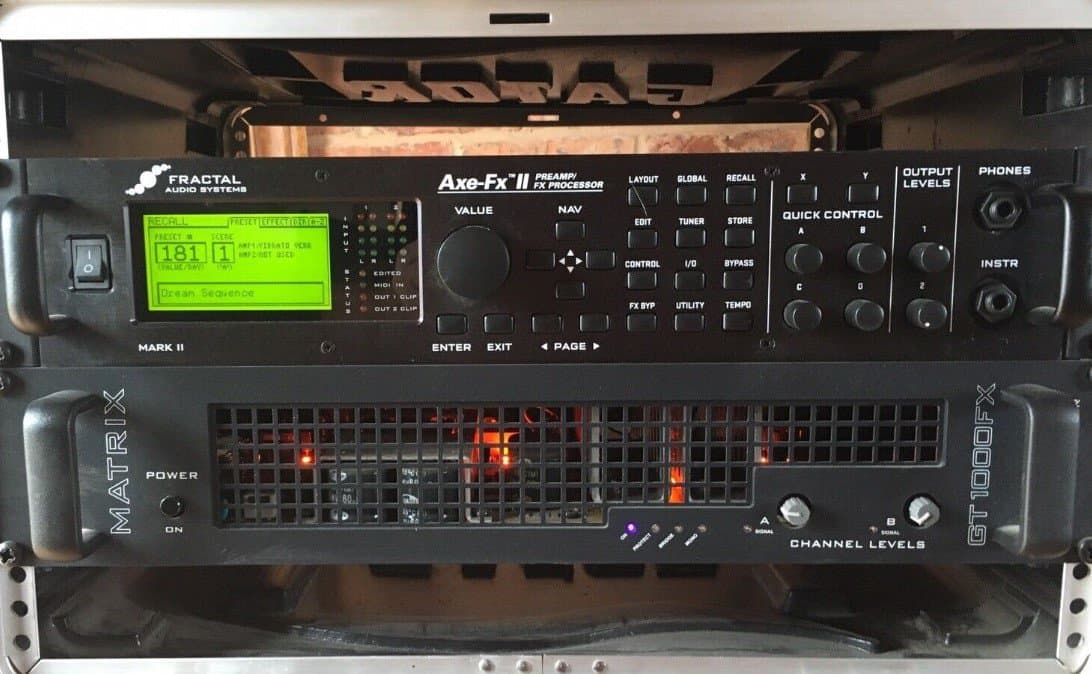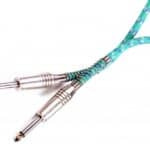Pedal effects are fantastic.
They grant a world of possibilities, with some interesting results in sounds and tone.
This is more interesting still when you combine one effect after the other.
However, pedal effects are just one of the many options to modify and interfere with a guitar’s sound and tone.
Another choice is the rack effects. These are similar to effect pedals, although they differ in some characteristics.
We’ll discuss these differentiations, pros, and cons later on in this article.
Meanwhile, we’ll answer the main question: which of the two is the best choice for guitarists?
Rack effects are more versatile and provide better control over the effects and more processing power. However, other details need to be considered: rack effects are more expensive and more difficult to set up than pedal effects. So, it’s impossible to say that one is better than the other.
But let’s not stick with this answer. After all, there has to be one better than the other, right?
Well, maybe if you consider your own goals. In that case, one option could be more suitable for you than the other.
Find all the information you need in this article, and you’ll be able to answer this question by yourself.
What are rack guitar effects?
Rack effects are devices that allow applying several effect chains to an audio channel or MIDI.
The effect rack works differently than an effect pedal.
Effect racks’ chains can be applied in parallel. This means that you can add plenty of effects both in a chain (one after the other) or in parallel (multi-chain).
Additionally, one may pannel these effects separately to mix and gain better control over them.
This allows the user to blend effects assertively, or to either reduce or increase their volume to achieve better results.
Advantages of rack effects for guitar
The main advantage of rack effects is their versatility.
As we have mentioned before, they grant sharper control over the multi-effects that the guitarist implements.
What’s more, rack effects are easier to combine than pedal effects.
Rack units also can be controlled with a midi foot controller, in comparison to pedal effects, which need to be connected (or disconnected) one at a time.
So, we could point out that rack effects are not only simpler to control, but also time-saving (especially for live shows).
Another advantage is that one can use more than one rack unit at once. And the good news is that the signal won’t lose its power because of this.
Also, most musicians claim that rack effects are stable, and won’t fail out of the blue.
Lastly, rack effects are more practical than pedal effects because they are simpler to pack, dismantle, and take from point A to point B.
On top of that, they demand using fewer cables, which makes live performances a bit less of a mess.
Cons of guitar rack effects
Naturally, some disadvantages will come with this tool.
The first one is the price. Unfortunately, guitar rack effects are more expensive than effect pedals.
Although it’s worth the investment in the long run, it may take some time to get one’s hands in this gear.
Besides, guitar rack effects are also more challenging to find than effect pedals.
Not because they’re impossible to locate (after all, even if you don’t find them at guitar stores, you can always look them up online), but because there are fewer options compared to effect pedals.
What’s more, rack effects are too heavy and, on top of that, a bit fragile.
Sure, this piece of gear is easy to dismantle, and consequently, easier to carry. However, it’s much heavier than a set of effect pedals.
And of course, you must take them with extreme care.
Last but not least, we find that rack effects are more difficult to set up and handle appropriately.
In other words, they lack simplicity.
You can also use pedals in a rack setup
Combining both options is great if you’re willing to give this experience a try.
We recommend you start with a pedal board, acquire a power supply, and quality cables.
Then, arrange the pedals accordingly, and use a mini switcher to control them all.
Lastly, by using a midi-controlled switcher in the pedal board, you’ll be able to control your pedal’s switcher.
Needless to say, mixing both pieces of gear will demand a lot of money. But of course, it’s an investment worth implementing sooner or later.
Main differences between rack effects and pedal effects for guitar
Check this chart to understand the main differences between the two in a simpler and well-organized manner.
| Feature | Rack Effects | Pedal Effects |
| Price | More expensive | Cheaper; economical |
| Weight | Heavier | Lighter |
| Capacities | Versatility; better control over the effects and sound | Less versatile; less control over effects |
| Set up | Complex; harder to set up | Simpler; easier to set up |
| Control | Handled with a midi-foot; more control overall | One at a time; less control |
| Variety | Less variety; less available | More variety; more options |
| Cables | Fewer cables on stage | More cables on stage (depends on the number of pedals) |
Which type should you choose?
The first thing to do is to thoroughly analyze both pros and cons of rack effects and pedal effects.
Once you have understood the differences (you can always check on Youtube to grasp a better understanding of the gear), you will choose the option that suits your goals better.
Now, what’s the best way to narrow down the options without further analysis?
Well, first of all, you need to know how much of an audiophile you are.
If you don’t care too much about the blending mix (that is to say, you feel okay with just “good” results), then work with pedal effects.
On the contrary, if you’re too obsessed (in a healthy way, of course!) with reaching perfection regarding sound quality, then rack effects are the go-to choice for you.
Also, you might prefer the most straightforward alternative. In that case, you have to consider two factors.
The first one is that rack effects are simpler to dismantle and assemble, and they are controlled by just one midi controller.
In that way, rack effects are undoubtedly straightforward.
The other factor to consider is that, although they are simple to use once the setup is done, programming a rack effect is too time-consuming.
With this in mind, it’s fair saying that pedal effects are simpler (and as a result, straightforward as well).
It depends on which part you focus on.
Finally, the price can be a problem for some.
So, stick to the option that you can afford.
Which one you’ll choose?

Hello there, my name is Ramiro and I’ve been playing guitar for almost 20 years. I’m obsessed with everything gear-related and I thought it might be worth sharing it. From guitars, pedals, amps, and synths to studio gear and production tips, I hope you find what I post here useful, and I’ll try my best to keep it entertaining also.





